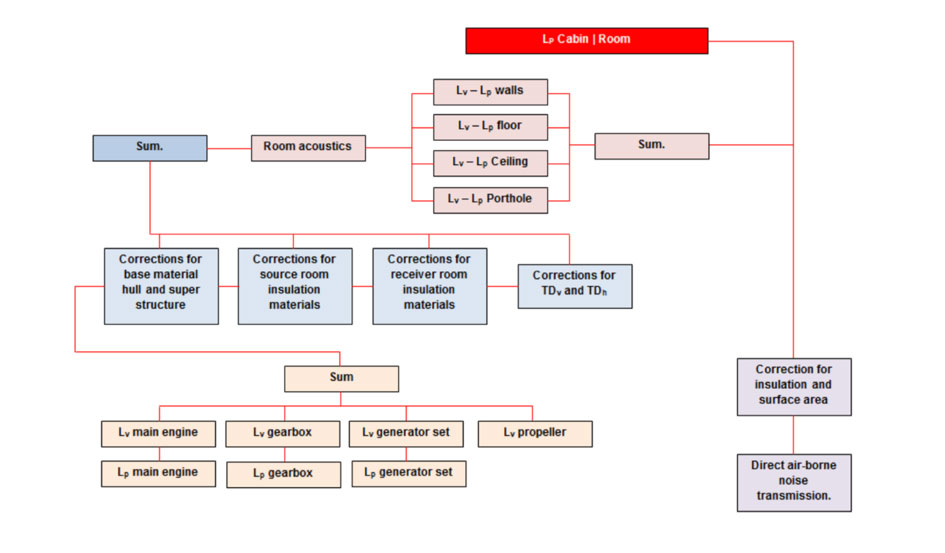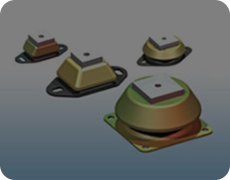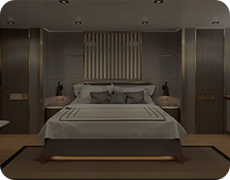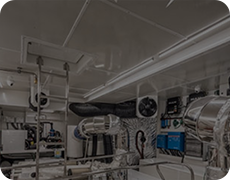NOISE CONTROL
Each project is studied as a one-off project in which we use the latest technologies and materials available on the market. The concept has been studied already in the Design Stage meaning it is a matter of fine tuning to meet similar targets as shown below or if the client has special requirements, we will meet these requirements.
|
Yacht | Owner and Guest areas Noise levels in dB(A) |
||||||
|
Location: |
Comfort rating number (crn)
|
|||||
|
|
In harbour condition |
Transit condition |
||||
|
|
1 |
2 |
3 |
1 |
2 |
3 |
|
Sleeping rooms |
35 |
40 |
45 |
45 |
50 |
55 |
|
Lounges |Saloons |
40 |
45 |
50 |
53 |
58 |
62 |
|
Outdoor area |
50 |
55 |
60 |
75 |
80 |
85 |
|
Wheelhouse |
- |
- |
- |
60 |
60 |
65 |
DNV Comfort Class Levels
Silent Line is using various inhouse designed computer software to predict noise levels in each cabin or room during transit and anchor condition.

Important input parameters are:
Over the years we carried out many noise predictions and the average between predicted | calculated and measured is maximum 2 dB(A) in the frequency range from 63 Hz up to 2000 Hz.

SILENT LINE
Silent Line Presents | Whisper Line Custom Sound Shields
Silent Line is designing and producing, in house, Custom Build Sound Shields for the Marine sector. Pending on your generator set we design, as shown above, a tailor-made sound shield from steel or aluminium pending on the requirements of the client.
Our Whisper Line sound shields offers a transmission loss (TL) up to 40 dB(A) to ensure silence and comfort in the accommodation areas throughout the Yacht. Our Whisper Line sound shields are supplied with high volume secondary elastic mounting system to guarantee extreme low structure-borne noise levels at the ship structure (foundation) below the sound shield.
If we awakened your interest, please do not hesitate to contact us for more detailed information and pricing.
Room acoustics is an important study within the noise control package. Within the room acoustic study, we investigate the volume of the room versus the amount of absorption within each room and the reverberation time.
For sleeping areas, a reverberation time of 0.4 sec is recommended. Reverberation time is a period of time, for each 1/1 octave band frequency, in which the noise level drops with 60 dB (T60). Sound absorbing materials such as carpet, sound absorbing ceiling, soft sofas etc. are important elements to achieve the required reverberation time.
NOISE CONTROL RELATED PRODUCTS:
SOURCE ROOMS:
Engine room or generator room are common source rooms onboard a luxury Yacht. Most common products used by Silent Line are:
RECEIVER ROOMS:
Sleeping areas, Salon | Dining area, Offices etc. are receiver rooms onboard luxury Yachts. Most common products used by Silent Line in these areas are:



